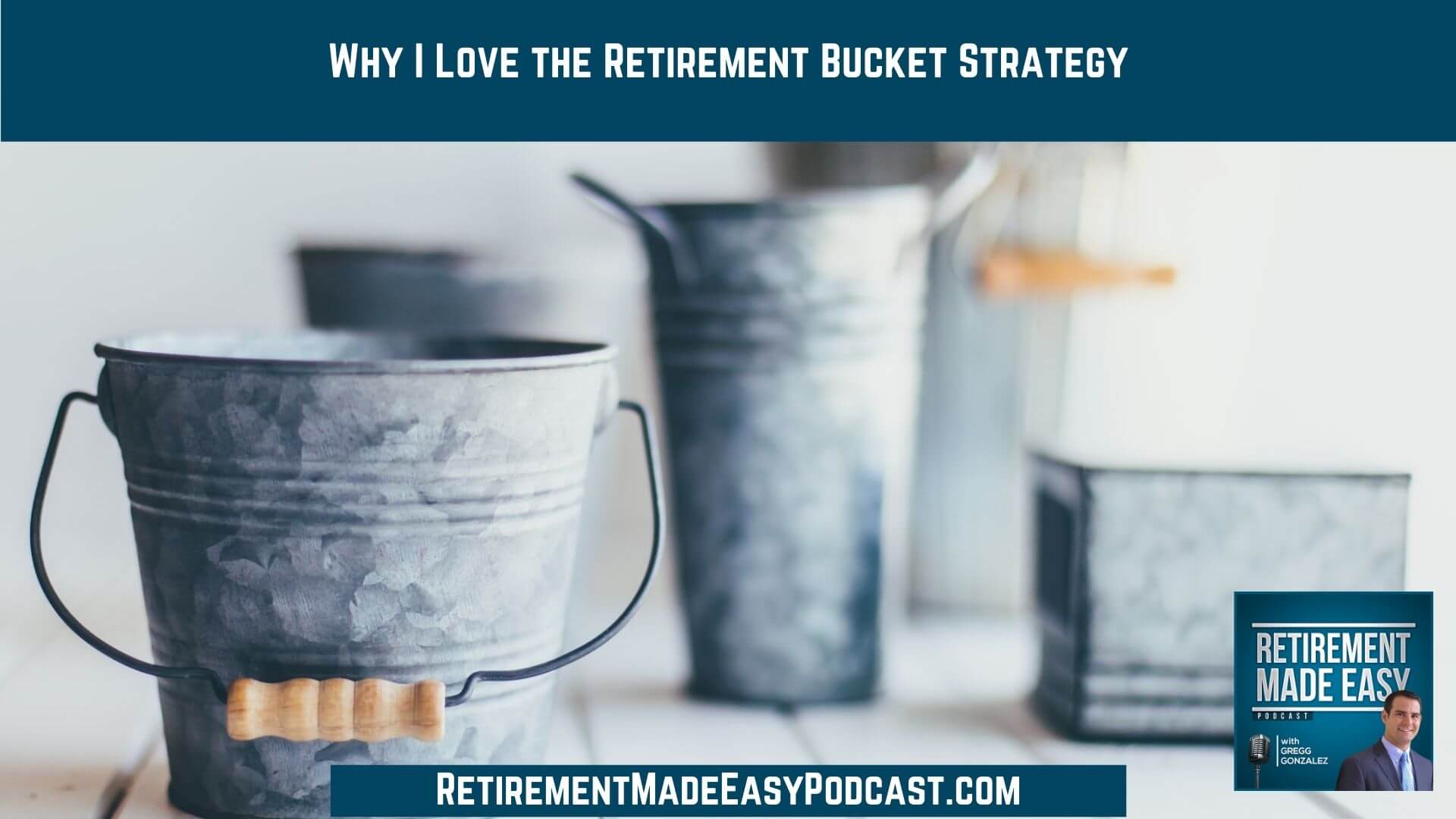
The bucket strategy is a popular way to plan for retirement. Now only is it popular, but it’s an easy-to-understand approach that works. Everyone wants to retire and be able to live comfortably, but many people don’t realize that it takes some planning to do that. Social security and pensions aren’t enough to sustain your lifestyle. So what is the strategy? How does it help you reach your retirement goals? Listen to this episode of Retirement Made Easy to find out!
You will want to hear this episode if you are interested in…
- [1:33] The retirement bucket strategy
- [3:20] Bucket #1: Your rainy-day fund
- [5:42] Bucket #1B: Upcoming expenses
- [6:57] Bucket #2: a 4% withdrawal
- [12:10] Bucket #3: Leftover money
Bucket #1: Your rainy-day fund
The purpose of bucket #1 is to be your rainy-day fund—AKA your emergency fund. This is for the unexpected circumstances that life throws your way. It might be a new furnace, A/C, or new tires on your car. We recommend that anyone in retirement should have 6–12 months of living expenses saved. If your current monthly expenses are around $5,000, you’d want at least $30,000 in bucket #1 for your emergency fund.
This isn’t something you invest but simply hold in an account at your bank. These days, you won’t earn much interest on your emergency fund. But if you’re looking for the best bang for your buck, BankRate.com can help you weigh your options.
Also always recommend something I call bucket #1B for “upcoming expenses.” For upcoming expenses, set aside a “sinking fund” where money is earmarked for upcoming expenses. After all, you don’t want to deplete your emergency fund to buy a new car. You might need to pay for dental work. Or you could be paying for a wedding or vacation. They are all near-term expenses that you need to plan for.
Bucket #2: Invest to sustain
You have to look at retirement as a cashflow issue. Let’s assume you’re collecting a pension and social security. Perhaps you have a $2,000 a month deficit that you need to draw from your retirement accounts to sustain a comfortable lifestyle. We’ve already established that you can’t live just on social security or your pension.
That’s why we recommend earmarking funds to bucket #2 where you can withdraw 4% a month. So if you need $2,000 a month, you need to fill up bucket #2 with $600,000. A 4% withdrawal from this bucket produces the income you need to live in. You can invest your retirement accounts however you and your advisor decide—but it needs to be producing a monthly income for you. What might not be a good idea to invest bucket #2 in? Listen to hear my thoughts!
Bucket #3: Invest for growth
Bucket #3 is crucial to your retirement plan. This bucket should be invested for growth. The money you’re living on in bucket #2 may not be enough to sustain the lifestyle you want in retirement. Why? Because the cost of living will go up every year. An extra $2,000 a month may not always be enough. You may need to dip into bucket #3. You need more growth in this bucket than the cost of living increases per year.
Medical expenses will rise. The price of a flight or hotel room will increase. 30 years ago—in1990—a stamp was $0.25. In 2020 it’s $0.55. According to this article, a gallon of gas was $0.79. Now it’s $2 a gallon. A Big Mac at McDonald’s was just over $3. In 2018 they were $5.99. Now they’re over $6.
The bottom line? You need to understand how your money is invested. This bucket strategy works well and makes sense. It allows you to diversify your risk. The beauty of the bucket strategy is that it divides the money out based on your goals and needs. Listen to the whole episode to learn more!
Resources & People Mentioned
- USPS
- Bankrate
- Article: 1990s Prices
Connect With Gregg Gonzalez
- Email at: Gregg@RetireSTL.com
- Podcast: https://RetirementMadeEasyPodcast.com
- Website: https://StLouisFinancialAdvisor.com
- Follow Gregg on LinkedIn
- Follow Gregg on Facebook
- Follow Gregg on YouTube



